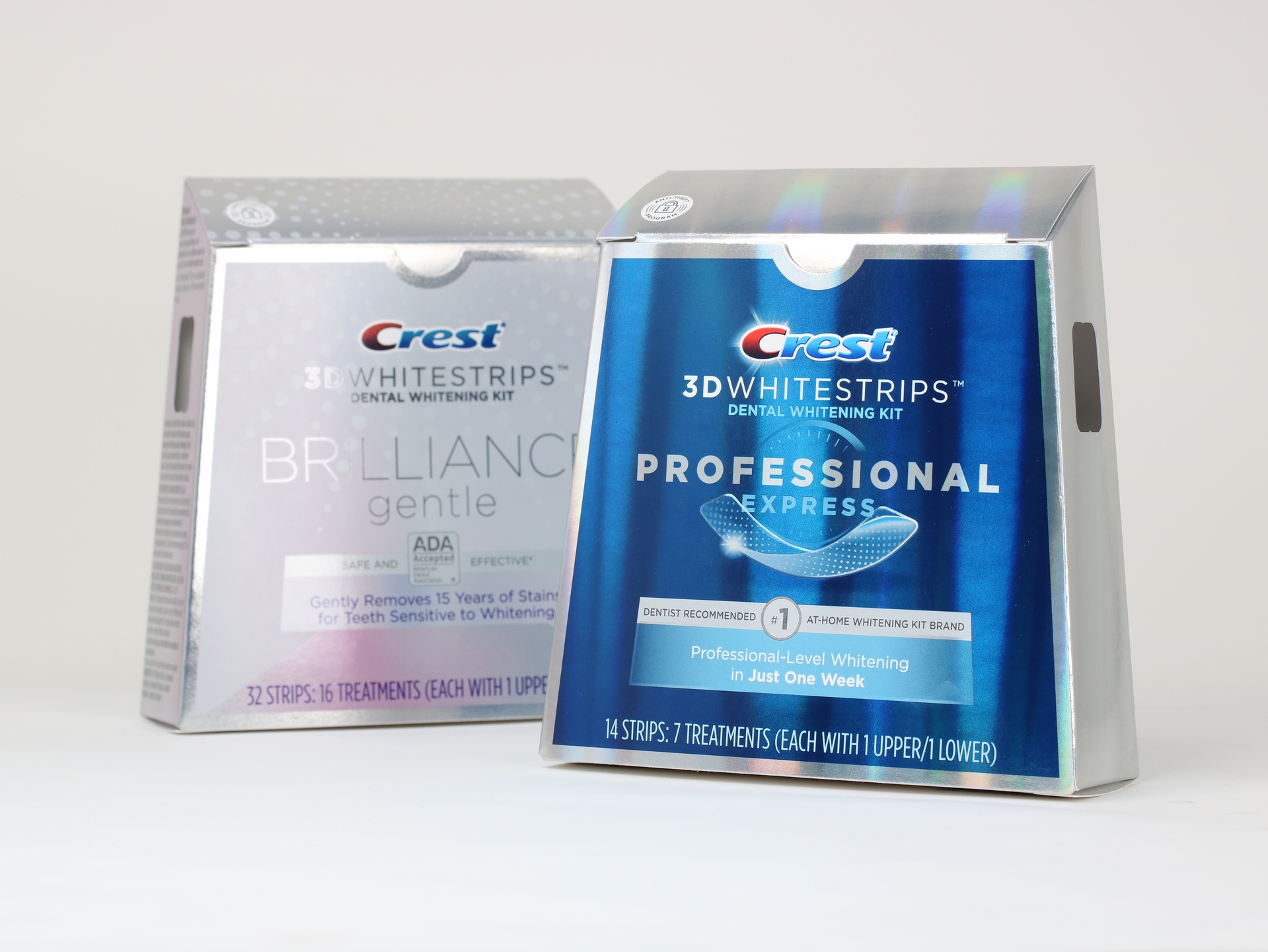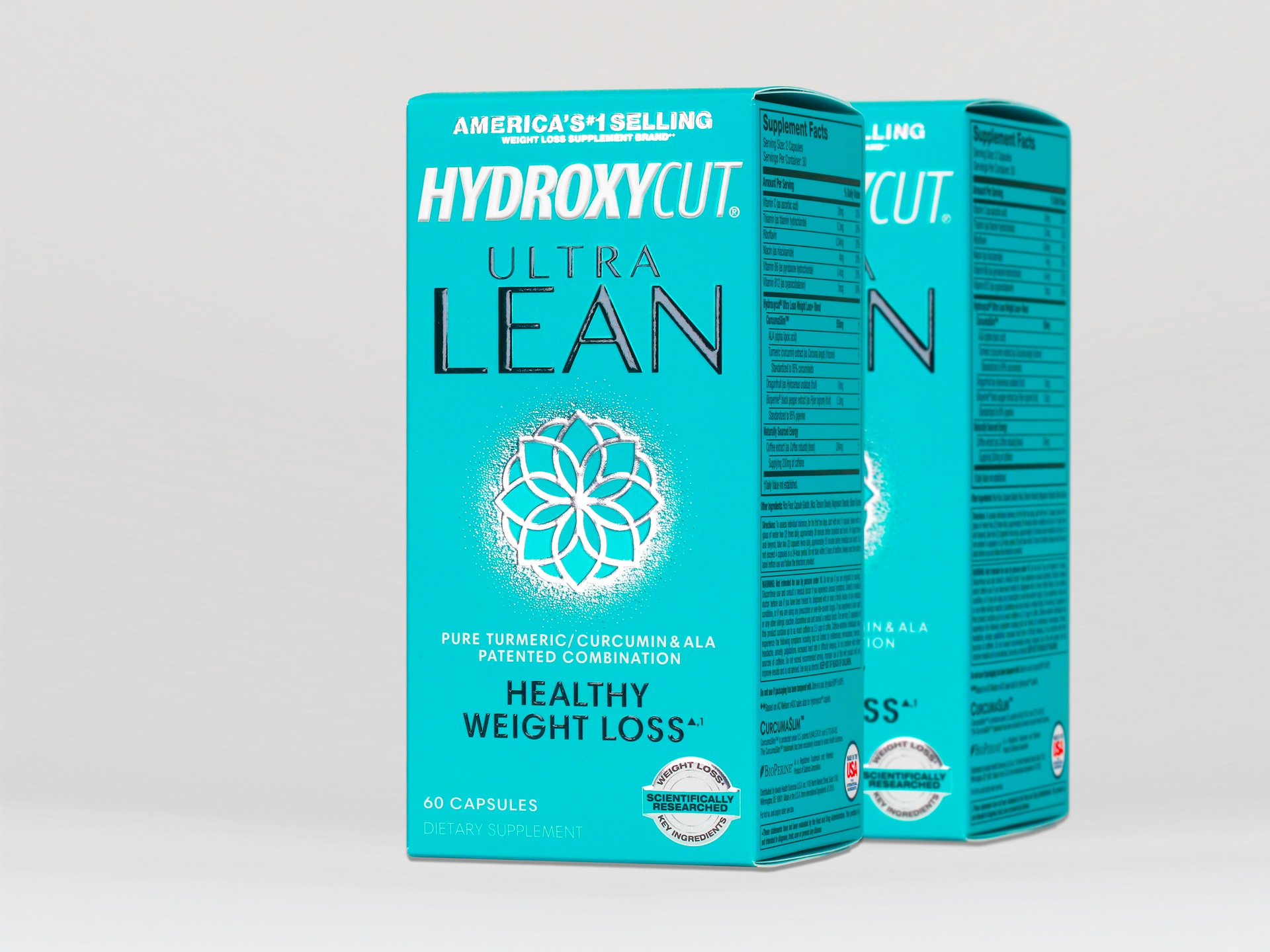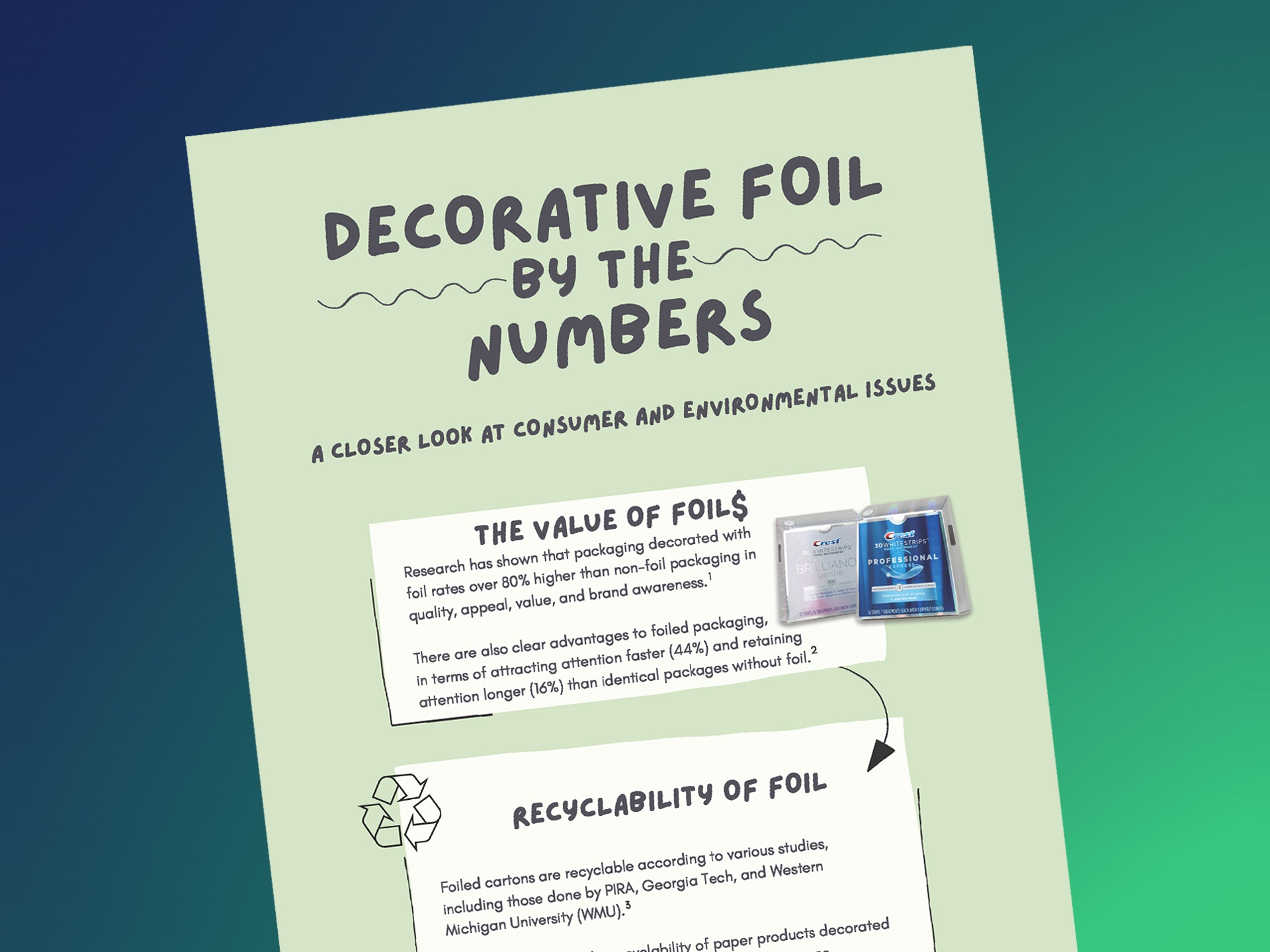The High Spark of Low Metal Foils

Blog
Foil Transfer Decoration
Leading CPG brands know the value of foil transfer decoration (i.e., cold foil, hot fot stamping) on packaging, but most don't know how little aluminum is actually used to achieve brilliant metallic effects.
Brands choose foil because of its high-visibility enhancement properties. Research has shown that packaging decorated with foil rates more than 80% higher than non-foil packaging in quality, appeal, value and brand awareness (1). Foiled packaging also attracts attention faster (44%) and retains attention longer (16%) than identical packages without foil (2).
Several studies have affirmed the recyclability of foil decorated packaging, but what about the environmental impact of the aluminum used in the process? The Foil & Specialty Effects Association (FSEA) and its Sustainability Committee set out to find the answer.
FSEA worked with its member foil manufacturers to determine the amount of aluminum that is used in the manufacturing of transfer foils, including hot, cold and digital transfer foil products. Through this investigation, FSEA compiled data confirming the layer of aluminum that provides the metallic sheen in a metallic transfer foil is negligible – in fact, it is so thin that it is measured in nanometers, which is 1/10th of an angstrom.
“We believe it is important that those involved in the repulping and recycling processes understand the unbelievably small amount of aluminum that is contained in decorative transfer foils,” stated Jeff Peterson, FSEA Executive Director.
Literally Splitting Hairs
The study found that the thickness of the aluminum layer in a transfer foil – which is a layer of aluminum that is vacuum metallized to a film carrier – has been found to be between only 30 to 60 nanometers in thickness. For comparison purposes:
- A human hair is approximately 80,000 to 100,000 nanometers thick.
- A sheet of copy paper is approximately 100,000 nanometers thick.
- The thickness of the aluminum layer in transfer foils is more than 300 times thinner than a standard household aluminum foil.
Zone Coverage
Here's another way to look it: a jumbo roll of foil (40” x 35,000’) weighs 440 pounds and covers 2.4 football fields. The amount of aluminum on that roll of foil weighs only 1.042 ounces and measures 0.66 cubic inches in volume (about the same as the tip of your thumb).
High Spark, Low Metal
Advancements in foil transfer technology have resulted in ultra-thin metalized layers as well as thinner film carriers (which don't remain on the sheet), further reducing environmental impact.
“Through investigation and communication with FSEA-member foil manufacturers, the FSEA and its Sustainability Committee have been able to provide specific information that can help brand owners, recyclers and others involved in the decision to foil-decorate cartons, direct mail, or other printed products understand the miniscule amount of metal that is involved in hot, cold, and digital transfer foil manufacturing,” explained Peterson. “Our goal as an association is to continue to educate those involved with decorative foils about the facts and to dispel myths by using studies the FSEA has commissioned – along with additional supporting findings such as this – to demonstrate that foil decorated paperboard is repulpable and recyclable.”
To learn more download the FSEA press release.
Foil References
(1) Perception Research Services. Foil Stamping Strengthens Brand Identity. 2004.
(2) Foil & Specialty Effects Association (FSEA). An Initial Study into the Impact of High-Visibility Enhancements on Shelf Presence. 2014.

Decorative Foil by the Numbers infographic
Foil sells! Did you know that foil decorated packaging rates higher than non-foil packaging? It can also be produced while meeting your brand's sustainability goals.
In this free guide, you’ll learn:
- The value of foil in terms of shelf appeal.
- The recyclability of foil and the amount of aluminum left on the sheet.
- The carbon neutrality of paperboard.

